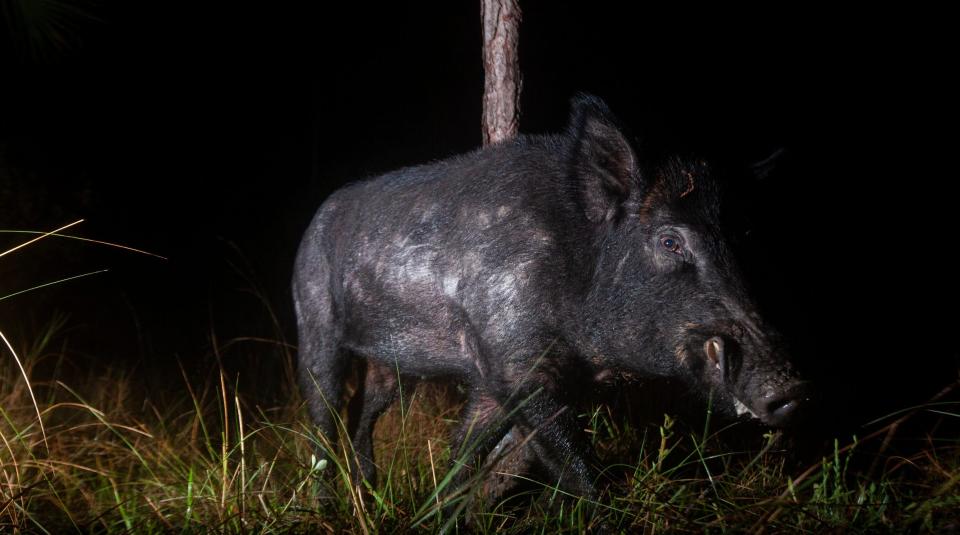Is America ready for 'Super Pigs'? Wild Canadian swine threaten to invade the US
A difficult to eradicate population of wild hogs are roaming Canada and officials worry they'll soon spill over to the United States. This population of "super pigs" often consists of crossbreeds that combine the survival skills of wild Eurasian boar with the size and high fertility of domestic swine, according to the Associated Press.
Minnesota, North Dakota and Montana are already taking measures to prevent an invasion of the "super pig."
These wild pigs are spreading out of control in Alberta, Saskatchewan and Manitoba, posing a new threat to native species.
Feral swine: America's got a $2.5 billion wild hog problem. These states see the worst of it.
Wild hogs are one of the most invasive animals
Since their introduction to North America in the 1500s, the feral swine population expanded across more than three-quarters of the country. According to the Department of Agriculture, their population has grown to more than 9 million.
The wild animal has expanded westward and northward, with states like California, Hawaii, and Michigan reporting a fairly large feral hog population.
Ryan Brook, a professor at the University of Saskatchewan and one of Canada’s leading authorities on the problem, told the Associated Press that feral swine are, “the most invasive animal on the planet” and “an ecological train wreck.”
According to the U.S. Department of Agriculture, feral hogs cause approximately $2.5 billion in agricultural damages each year.

'Super pigs' are difficult to eradicate
The wild pigs are smart and adaptable, making them very good at surviving brutal winters in Canada. Officials say they will eat anything, including wildlife and crops for survival. They spread diseases to hog farms like African swine fever. They tear up land easily and they reproduce quickly.
Brook told the Associated Press that even when 65% or more of a wild pig population is killed every year, the population will still increase. The success rate for hunters is only about 2% to 3%.
“The only path forward is you have to be really aggressive and you have to use all the tools in the toolbox," said Brook.
Managing the feral hog problem
In some states, total elimination of feral hogs is the end goal for conservationists.
The Missouri Feral Hog Elimination Partnership killed 9,857 feral hogs in 2021, bringing the total number of hogs killed since 2016 to more than 54,000.
Public hunting is one of the most popular mitigation tactics of wild hogs and has become a common recreational activity. But hogs often relocate in response to the pressures of hunting. Fencing and trapping can be more effective in mitigating wild hog populations, but require more upkeep and investment, according to Captain Experiences.
Which states are most impacted by wild hogs?
Florida, Georgia and Texas have the most feral hog reports in the U.S., according to data from the University of Georgia Center for Invasive Species and Ecosystem Health.
In 2023 alone, Texas had 2,425 feral hog spottings, followed by 1,377 in Georgia.
Invasive species and climate change: A perfect match? These animals thrive amid global warming.
The Associated Press contributed to this reporting
This article originally appeared on USA TODAY: Invasive species alert: 'Super pigs' in Canada could spill over to US

